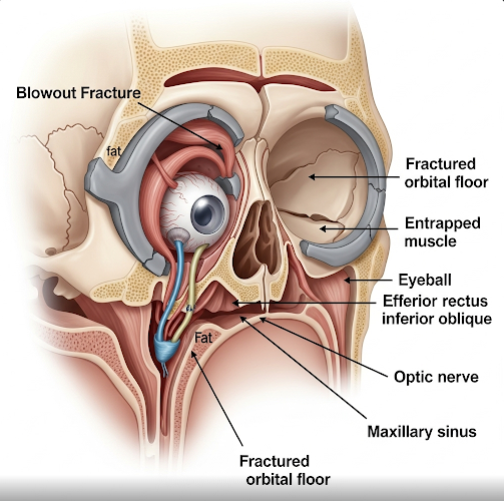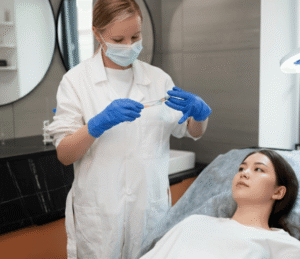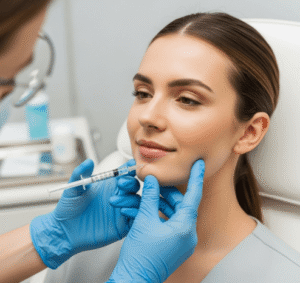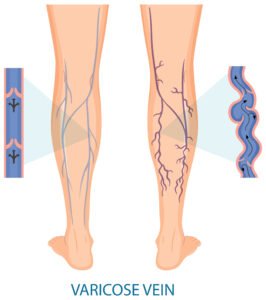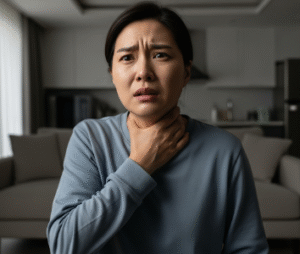Overview
Orbital fractures are breaks or cracks in the bones that form the eye socket, typically caused by blunt trauma to the face. These fractures can affect the surrounding tissues, muscles, and nerves, leading to vision problems, facial deformity, or eye movement restrictions. While some minor fractures may heal on their own, more severe cases often require surgical intervention. Prompt diagnosis and treatment are important to prevent long-term complications.
What is Orbital Fracture?
An orbital fracture refers to a break in one or more of the bones surrounding the eye. The orbit is a complex structure composed of several thin bones that can easily fracture upon impact. Common types include blowout fractures (fracture of the orbital floor or wall), orbital rim fractures (outer edge of the eye socket), and complex orbital fractures (multiple breaks involving the eye socket and surrounding structures). These injuries often occur during sports accidents, falls, or physical assaults.
Symptoms
- Swelling and bruising around the eye
- Pain or tenderness in the eye socket or face
- Double vision (diplopia), especially when looking up or down
- Sunken eye appearance (enophthalmos)
- Restricted eye movement
- Numbness in the cheek, upper lip, or upper teeth (due to nerve damage)
- Bleeding in the white part of the eye (subconjunctival hemorrhage)
- Vision changes or blurriness
- Clicking or grating sound when moving the jaw (in some cases)
Causes
Orbital fractures usually result from trauma to the face. Common causes include:
- Sports-related injuries (e.g., from balls, elbows, or collisions)
- Motor vehicle accidents
- Falls, especially in older adults
- Physical assault or interpersonal violence
- Industrial or workplace accidents
- Bicycle or motorcycle crashes without facial protection
Risk Factors
- Participation in high-impact sports without facial protection
- Occupations with high risk of facial injury (e.g., construction, law enforcement)
- History of previous facial trauma
- Osteoporosis or weakened bones
- Domestic violence
- Lack of use of protective gear (e.g., helmets, face shields)
Complications
If left untreated, orbital fractures may lead to several complications:
- Permanent double vision or misalignment of the eyes
- Sunken or asymmetrical appearance of the eyes
- Entrapment of eye muscles leading to restricted movement
- Chronic facial numbness
- Persistent pain or pressure around the eyes
- Eye damage, including rupture or internal bleeding
- Infection in or around the eye
- Cosmetic deformities requiring reconstructive surgery
Prevention
- Use protective eyewear during contact sports or hazardous work
- Wear helmets and face guards while biking, motorcycling, or skiing
- Install safety measures at home to prevent falls, especially for the elderly
- Avoid high-risk confrontations and ensure personal safety
- Promote awareness of domestic violence and seek help if needed
- Regular eye and facial check-ups if involved in high-risk activities
Treatment Option in Korea
South Korea is renowned for its advanced facial trauma and reconstructive surgery services. Orbital fractures are managed by a multidisciplinary team including ophthalmologists, maxillofacial surgeons, and plastic surgeons. Available treatments include:
- Initial assessment: CT scan or MRI to determine the extent and type of fracture
- Observation: Minor fractures without muscle entrapment or vision issues may heal naturally under close supervision
- Surgical repair: Indicated for severe fractures involving muscle entrapment, cosmetic deformity, or vision problems; procedures often involve repositioning bones and placing implants or plates
- Reconstructive and cosmetic surgery: Performed at specialized clinics to restore facial symmetry and function
- Postoperative care: Includes antibiotics, anti-inflammatory medications, and eye protection during recovery
Top hospitals such as Asan Medical Center, Yonsei Severance Hospital, and Samsung Medical Center provide cutting-edge treatment, 3D imaging, and minimally invasive surgical techniques. International patients benefit from English-speaking staff, rapid care, and globally recognized outcomes in facial trauma reconstruction.

